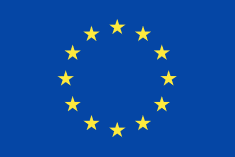![[PREVIOUS]](/ebiz/images/but_previous.gif)
![[INDEX]](/ebiz/images/but_up.gif)
![[NEXT]](/ebiz/images/but_next.gif)
![[PRINT]](/ebiz/images/but_print.gif)
|
Summary
1. The aim of this document is to offer a vision of a Reference Architecture for the eBusiness harmonisation in the Textile Clothing and Footwear sectors. The eBIZ-TCF architecture aims to enable interoperability between existing systems and organisations. Achieving it, would lower the threshold for starting e-Business both for large enterprises and for medium and small actors in the supply chain and would also encourage technology suppliers to provide better support and services for e-Business. It can be used as reference both for new e-Business implementations and by existing users needing to modify their systems or to achieve interoperability with others. The Reference Architecture has been developed in the framework of the eBIZ-TCF project (www.eBIZ-TCF.eu), a DG Enterprise and Industry initiative that is an European large scale attempt to foster the adoption of eBusiness and related technologies and standards in sectors characterised by a large presence of SMEs and by an low level of adoption of eBusiness and interoperability standards. 2. As main initial requisite, wherever possible, the architecture’s specifications are based on existing public standards and already running experiences; further standardisation developments are outside the scope of the project, nevertheless the involvement of European Standards Organisations (ESOs) has been pursued. In general terms, the project does not aim to develop or validate a new technology or a new software but aims to setup an approach to foster eBusiness adoption (eAdoption) in two sectors dominated by SMEs through a work of harmonisation that is strongly aware of the standardisation achievements. The key features of the architecture: In short the architecture aims to create a favourable environment to establish a collaboration between manufacturers and between manufacturers and retail organisations. 3. For the manufacturer-retail supply chains (downstream part of the supply chain) and for the manufacturer-supplier networks (upstream part) different requirements were outlined in the analysis report produced by the project [1] and the architecture started from them in order to propose appropriate technological and methodological specifications to cover topics such as data models, communication protocols and product classification. 4. The document offers the vision and the description of a possible and coherent reference framework of existing specifications and initiatives that enable the design of eBusiness experiences; a strong focus is on the reference scenarios and on some general requirements; when developed and maintained by third parties, the technical specification are referenced from their sources so that it is easy to design harmonised eBusiness solutions. |
Resources | ||
|
||
![[PREVIOUS]](/ebiz/images/but_previous.gif)
![[INDEX]](/ebiz/images/but_up.gif)
![[NEXT]](/ebiz/images/but_next.gif)
![[PRINT]](/ebiz/images/but_print.gif)
|







